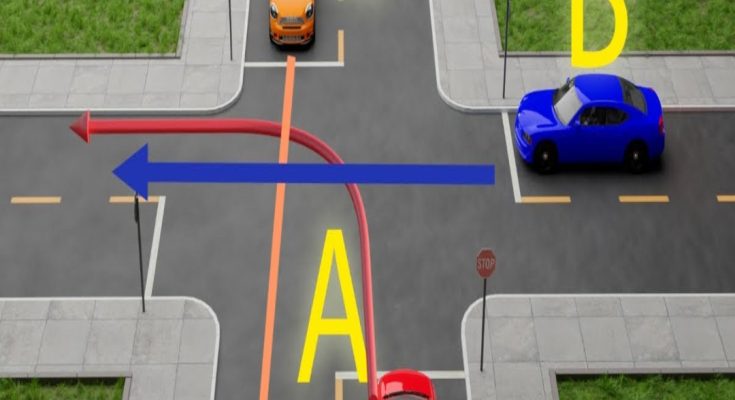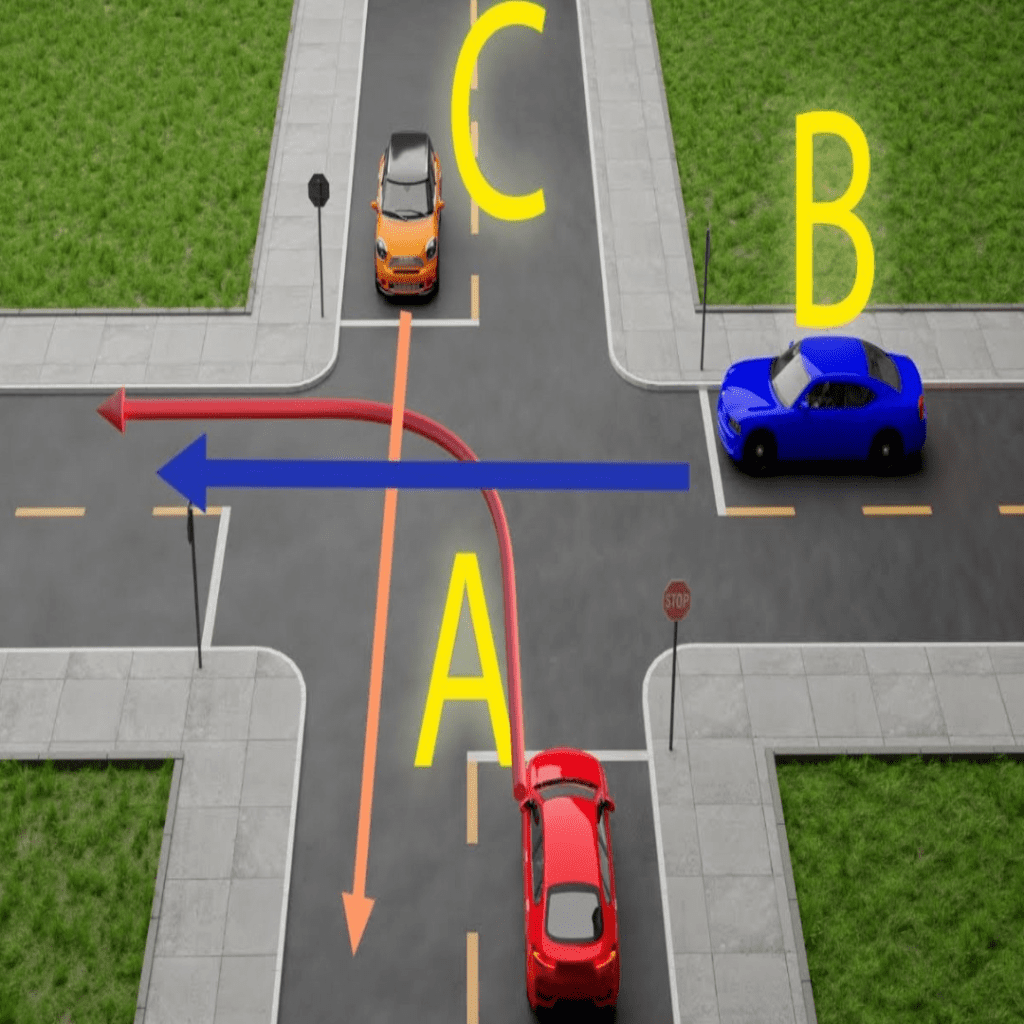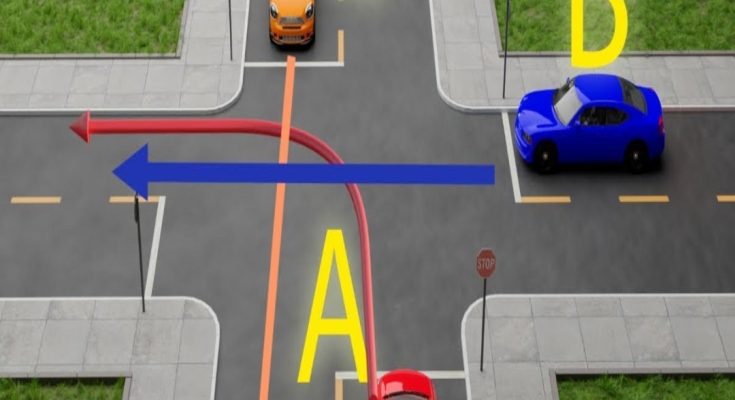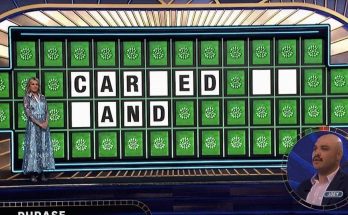Which car has the right of way?

When approaching intersections, understanding who has the right of way is crucial for safety and efficient traffic flow. The image above showcases a common scenario where multiple vehicles arrive at an intersection with conflicting paths. The question arises: Which car has the right of way? The correct answer is Car C, but let’s break this down to understand why.
Decoding the Intersection Scenario
In the image, three vehicles—A (red car), B (blue car), and C (orange car)—are approaching an intersection. Each vehicle is attempting to maneuver in a different direction, creating a complex traffic situation. Let’s examine the roles and movements of each car:
- Car A (Red Car): Coming from a stop sign, Car A intends to make a left turn across traffic.
- Car B (Blue Car): Approaching from a minor road, Car B also has a stop sign and plans to turn right.
- Car C (Orange Car): Traveling straight through the intersection from a main road without any stop sign.
Understanding the Right of Way Rules
The right of way at intersections is governed by specific traffic rules. Here’s how these rules apply to this scenario:
- Traffic Control Signs:
- Cars A and B both face stop signs, which means they must yield to vehicles on the main road.
- Car C, traveling on the main road without a stop sign, has priority.
- Priority for Straight Traffic:
- Vehicles traveling straight generally have priority over those turning, provided no other traffic control measures apply.
- Since Car C is moving straight, it maintains precedence over Cars A and B.
- Right Turns vs. Left Turns:
- When two vehicles are at an intersection, a vehicle turning right (Car B) has priority over a vehicle turning left (Car A), as the left-turning car must cross oncoming traffic.
Breaking Down the Movements
Let’s analyze the specific movements in detail to see how the rules apply:
- Car C (Orange Car): Since Car C is traveling straight on the main road and faces no stop sign, it has the right of way and can proceed without stopping.
- Car B (Blue Car): Although Car B intends to turn right, it must yield to Car C because it faces a stop sign and is entering the main road.
- Car A (Red Car): Car A must yield to both Cars C and B. Not only is it turning left, which requires crossing traffic, but it also faces a stop sign, placing it last in the hierarchy.
Why Car C Has the Right of Way
In this scenario, Car C has the right of way because:
- It is traveling on the main road, free of traffic control signs or signals.
- Vehicles on minor roads with stop signs must yield to those on the main road.
- As it’s traveling straight, Car C’s path is the least obstructive and takes precedence.

Common Mistakes Drivers Make
Misinterpreting right-of-way rules can lead to confusion and accidents. Here are some frequent mistakes and how to avoid them:
- Assuming Equal Priority: Some drivers assume all vehicles at an intersection share equal priority. This is incorrect—road signs and rules dictate otherwise.
- Rushing at Intersections: Being overly aggressive or hesitant can disrupt traffic flow. Follow the rules calmly to ensure smooth movement.
- Ignoring Stop Signs: Drivers who neglect stop signs risk colliding with vehicles on the main road, as seen in this scenario.
The Importance of Yielding at Intersections
Yielding when required not only ensures safety but also keeps traffic moving efficiently. Here’s why yielding is essential:
- Prevents Accidents: Following the rules reduces the likelihood of crashes caused by confusion.
- Improves Traffic Flow: Yielding allows vehicles to proceed in an orderly manner, minimizing delays.
- Maintains Legal Compliance: Failure to yield can result in fines or legal consequences.
Tips for Navigating Intersections Safely
To avoid confusion and stay safe, follow these tips when approaching intersections:
- Observe Traffic Signs: Always be aware of stop signs, yield signs, and traffic lights that dictate your actions.
- Anticipate Other Drivers: Be prepared for unpredictable movements, especially if other drivers are unfamiliar with the rules.
- Communicate Clearly: Use your turn signals and maintain predictable movements to signal your intentions.
- Stay Patient: Don’t rush through intersections—wait your turn and ensure it’s safe to proceed.
Conclusion: Why Car C Has Priority
In this intersection scenario, Car C holds the right of way because it is traveling on the main road without stop signs or obstructions. Both Cars A and B must yield due to their stop signs, and Car A must further yield to Car B due to its left-turning maneuver.
Understanding and respecting right-of-way rules are critical for keeping our roads safe and efficient. Next time you approach an intersection like this, remember to assess the situation carefully, follow the rules, and yield when necessary. Safe driving starts with clear decision-making!



